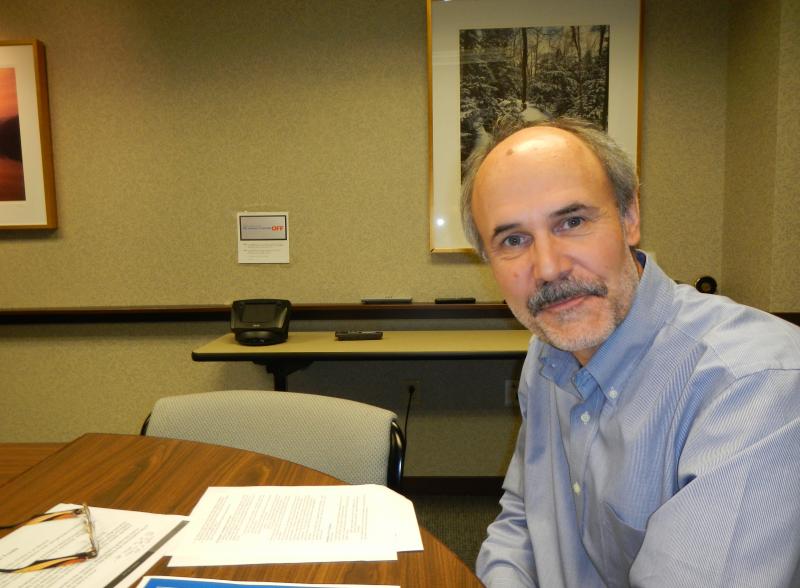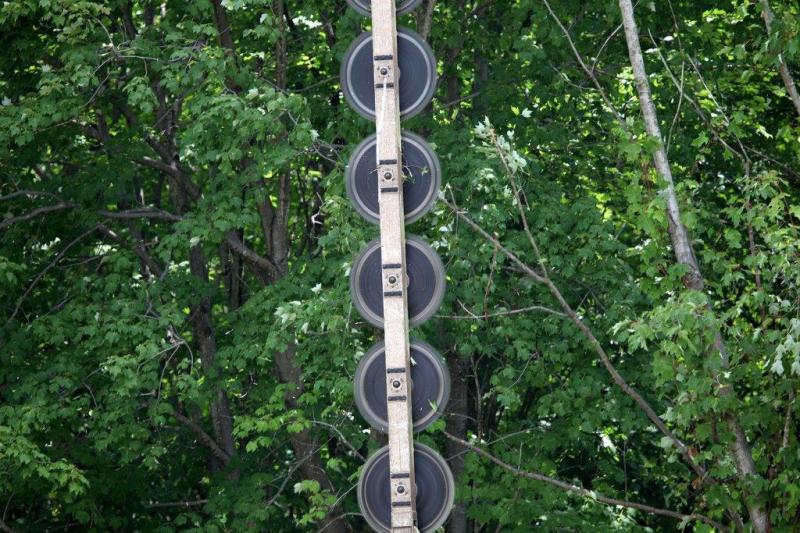Very few people beyond the operators of the electrical grid and FirstEnergy power plants knew shortly before 4 p.m. that day that there was something wrong.
But within a few minutes, they found out – when everything from flush toilets to airports shut down.
 Then Cleveland Mayor Jane Campbell said the city lost all four of its water pumping station. Cleveland Hopkins virtually shut down. And rush hour was eerily quiet – even without the stoplights working. Then Cleveland Mayor Jane Campbell said the city lost all four of its water pumping station. Cleveland Hopkins virtually shut down. And rush hour was eerily quiet – even without the stoplights working.
But the focus since that day hasn’t been on finding more peaceful rush hours. It’s been on figuring out what went wrong and how to stop it from going wrong again.
Not all FirstEnergy's fault
Mark Durbin sits in a conference room on the 17th floor of the FirstEnergy building in downtown Akron. He went up and down those 17 flights of steps four times that day; the elevators were out.
What went wrong?
Of course, back then he wasn’t lugging around a 228-page report by a joint U.S.-Canadian task force looking into the blackout. The report verifies the problems went well beyond FirstEnergy
"There’s a huge report here that shows on that particular day, ... there were 800 different events that happened that day on the system.
“Events,” such as computer failures, human error, malfunctioning substations, even one of five turbines at FirstEnergy’s Eastlake power station conking out.
And biggest of all, was actually a compound event, created by a whole series of small ones – a cascade of heated transmission lines sagging into the trees below and shorting out.
Zero tolerance
Many of those trees are gone now, or at least dwarfed by crews armed with saws, and even with blades lowered from helicopters. Durbin estimates FirstEnergy has spent $320 million on what it calls “vegetation management.”
“We have a zero tolerance now when it comes to any types of contacts in our transmission corridor.”
In other words, FirstEnergy and other power companies have easements and they're using them.
It’s not a popular move. Homeowners have gone as far as the Ohio Supreme Court to try to protect their trees. They’ve lost.
“It’s a very emotional issue. We’ve never said that it isn’t. I mean Northeast Ohio is an amazing place to live because of all the greenery. But the trees need to be maintained particularly around electrical lines because that’s how we get power from point A to point B.
New facilities coming on line
Less controversial is the $20 million FirstEnergy has spent to upgrade its transmission control center in Wadsworth until a new $45 million center in West Akron is ready to go -- likely by the end of this year.
 The architects’ drawings show a massive horseshoe with even more massive computer screens on the walls. Unlike the center back in 2003, operators will have an unobstructed view of operations in Ohio, Pennsylvania and New Jersey. FirstEnergy also inherited another center in West Virginia when it took over Allegheny Power in 2011. The architects’ drawings show a massive horseshoe with even more massive computer screens on the walls. Unlike the center back in 2003, operators will have an unobstructed view of operations in Ohio, Pennsylvania and New Jersey. FirstEnergy also inherited another center in West Virginia when it took over Allegheny Power in 2011.
“And it is a state of the art system as well. So when this is all done, FirstEnergy will have two of the most state-of-the-art transmission control centers not just in the States, probably, but in the entire world.”
FirstEnergy and other power companies have developed many of the improvements under a law Congress passed in 2005 that set mandatory reliability standards. Violations can cost companies as much as $1 million for each violation, and the Federal Energy Regulatory Commission now has full authority to keep watch.
Durbin runs through the list of what’s changed since 2003.
“There’s new facilities we built, new equipment we installed, new training that our operators have done, new procedures we have followed, all designed to make that system more robust.”
But, reservations remain
The electrical grid that performed so badly in the Midwest, eastern U.S. and into Canada on Aug. 14, 2003 also has improved technologically, though many question how prepared it is for new demands and new energies. Solar, wind and even natural gas all offer different challenges – from fluctuations in supplies to different supply routes. There's also the fear of cyberattacks.
So, despite all his confidence, Durbin is careful to never say never again. |